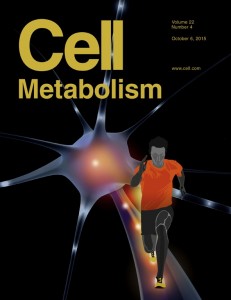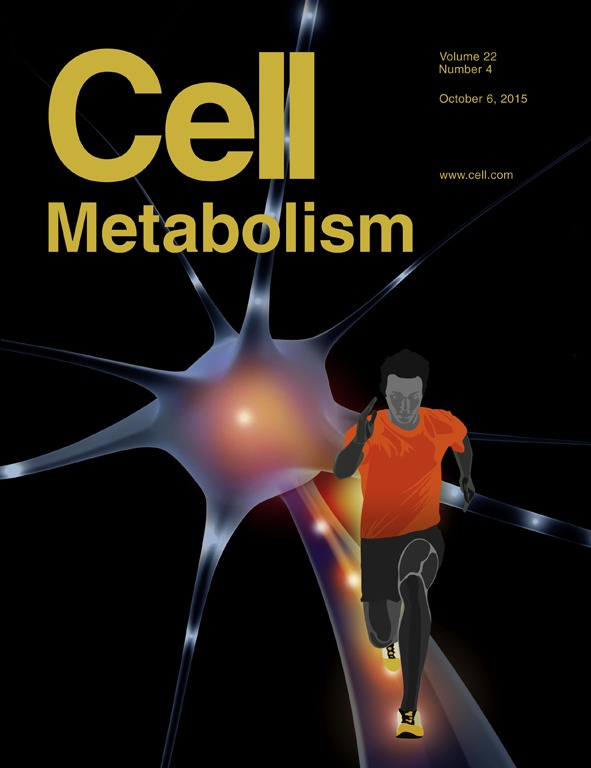Can an excess of bacteria in the gut lead to type 2 diabetes? That’s what Penn State researchers are saying and they have some advice on how to help reduce risk.

An excess of bacteria in the gut can change the way the liver processes fat and could lead to the development of metabolic syndrome, according to health researchers.
Metabolic syndrome is a group of conditions including obesity, type 2 diabetes, high blood pressure, high blood sugar and excess body fat around the waist.
People experiencing three or more of these conditions are considered to have metabolic syndrome and are vulnerable to liver and heart diseases.
Approximately 20 to 25 percent of adult Americans have the syndrome, according to the American Heart Association.
Continue Reading Below ↓↓↓
Research supported by the National Institutes of Health has recommended that Americans add more fiber to their diets because higher fiber diets have been found to improve many aspects of health. However in a certain segment of the population, this advice could be doing more harm than good.
“It is a common misconception that plant-derived dietary fiber contains zero calories,” said Matam Vijay-Kumar, assistant professor of nutritional sciences and medicine at Penn State.
While it’s true that neither people nor mice can digest plant-derived fiber, their gut bacteria can readily ferment the fibers and then release them as energy-rich short-chain fatty acids, such as acetic acid.
Once they reach the liver, these compounds convert into lipids and add to fat deposits that could potentially lead to the development of metabolic syndrome, especially in people and mice lacking toll-like receptor 5 (TLR5).
TLR5 is a receptor for bacterial flagellin and is part of the innate immune system that maintains gut-bacteria homeostasis, keeping gut bacteria from over-proliferating.
Approximately 10 percent of the human population has a genetic mutation in TLR5, resulting in a complete lack of its function, according to Vijay-Kumar. These individuals have a weakened immune system that may increase the risk of developing metabolic syndrome.
“Our present study suggests that bacterial fermentation of dietary fiber and the production of short-chain fatty acids contribute to deposition of fat in the liver,” said Vijay-Kumar, adding that it may be detrimental to the liver if these processes become dysregulated, especially in individuals with excess gut bacteria commonly associated with intestinal and liver disorders.
Short-chain fatty acids may be beneficial to the host’s health, but could be unfavorable in certain contexts where dysregulated gut bacteria generate uncontrolled short-chain fatty acids for a prolonged period of time.
In the current study, published today (Oct. 29) in the journal Cell Metabolism, the researchers found a link between unchecked bacterial fermentation, short-chain fatty acids and increased liver lipids — which can cause non-alcoholic fatty liver disease, leading to liver damage. They also found that overconsumption of dietary fiber may have adverse consequences in mice with compromised TLR5 function and gut bacterial overgrowth.
“Most of the observations describing the beneficial effects of short-chain fatty acids in metabolic disorders are from short-term studies and primarily from healthy subjects and experimental animals,” said Vishal Singh, postdoctoral fellow in nutritional sciences, Penn State. “Our next goal is to analyze the long-term effects of short-chain fatty acids, specifically in experimental models of type 2 diabetes and/or metabolic syndrome. We envision that our studies would drive the field towards ‘personalized’ cautioned dietary intake of plant-derived fiber in immunocompromised individuals.”
Continue Reading Below ↓↓↓
Vijay-Kumar is a member of the Huck Institutes of the Life Sciences and has a joint appointment in the department of medicine, College of Medicine and the department of nutritional sciences, College of Health and Human Development. Also collaborating on this research, along with V. Singh; were Beng San Yeoh, Xia Xiao, and Rachel Walker, graduate students; Manish Kumar, postdoctoral fellow; Kamil Borkowski, research assistant; and Gregory C. Shearer, associate professor, all in nutritional sciences, Penn State. In veterinary and biomedical sciences, Penn State were Limin Zhang, research associate, Jingwei Cai, graduate student and Andrew D. Patterson, associate professor and Kevin Harvatine, associate professor, animal science, Penn State. The National Institutes of Health supported this research.
Other researchers include Benoit Chassaing, assistant professor, Mark T. Baker, Ph.D. student and Andrew T. Gewirtz, all in the Institute for Biomedical Sciences, Georgia State University; Nagendra Singh, assistant professor, Georgia Regents University; James M. Ntambi, professor, biochemistry and nutritional sciences, University of Wisconsin – Madison; and Bina Joe, professor, physiological genomics, University of Toledo.
Souce: Penn State
Journal: Cell Metabolism
Funder: National Institutes of Health












I was diagnosed as type 2 at age 45 and am now 60. Have been on various meds. Metformin and Victoza have kept my A1C at 6.0. I was having terrible gut problems and diagnosed with Heliobacter. Doctor put me on two antibiotics and since then my blood sugar levels have been dropping low on their own. I am taking one metformin twice a day and not needing the Victoza. Going to mention this to my doctor when I go for my three month checkup.